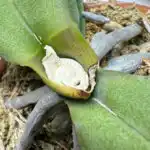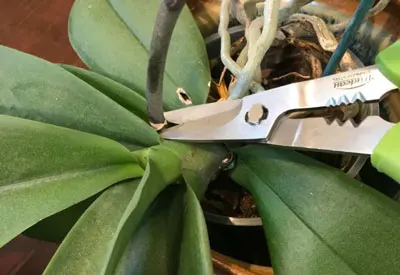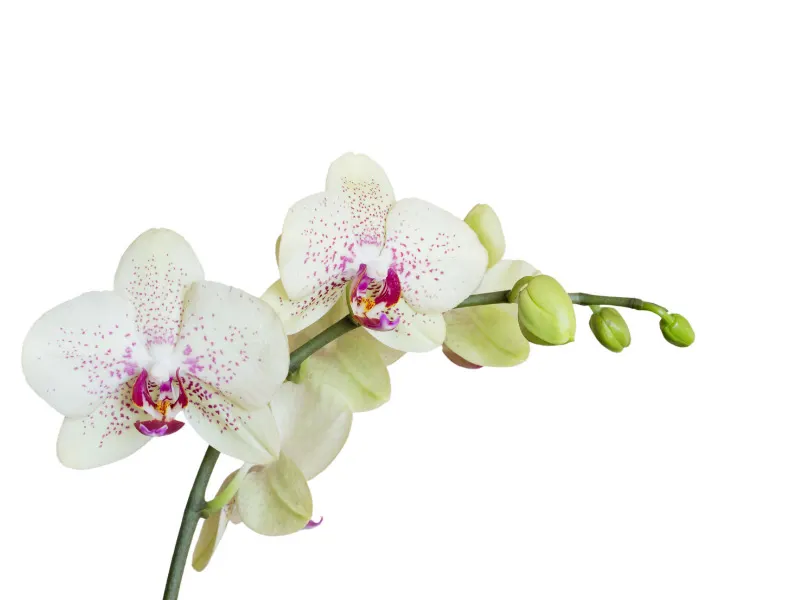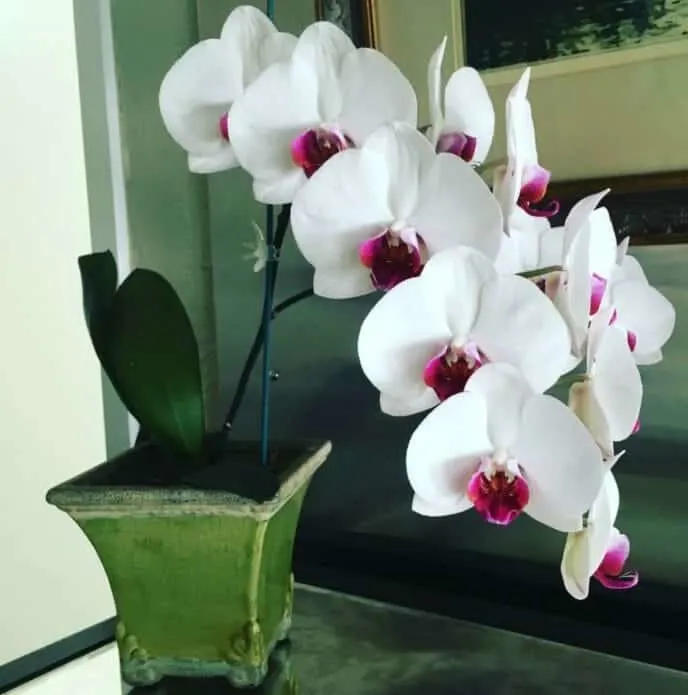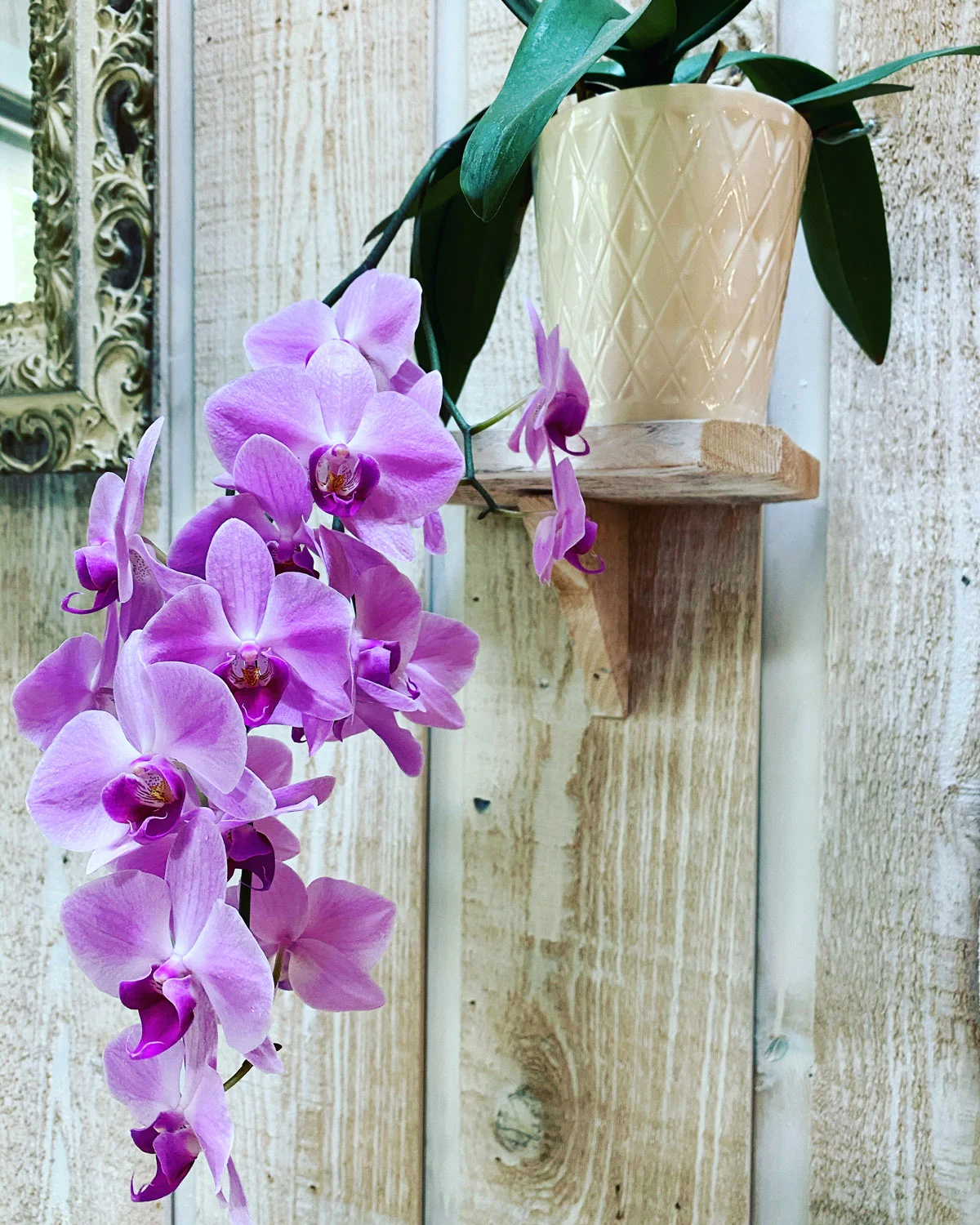Some of the links in this post may be affiliate links.
Plants can get sunburn just like humans can. In this post, I’ll show photos of what moth orchid sunburn looks like, as well as discuss the causes, prevention and what to do with your Phalaenopsis orchid plant after it has burned.
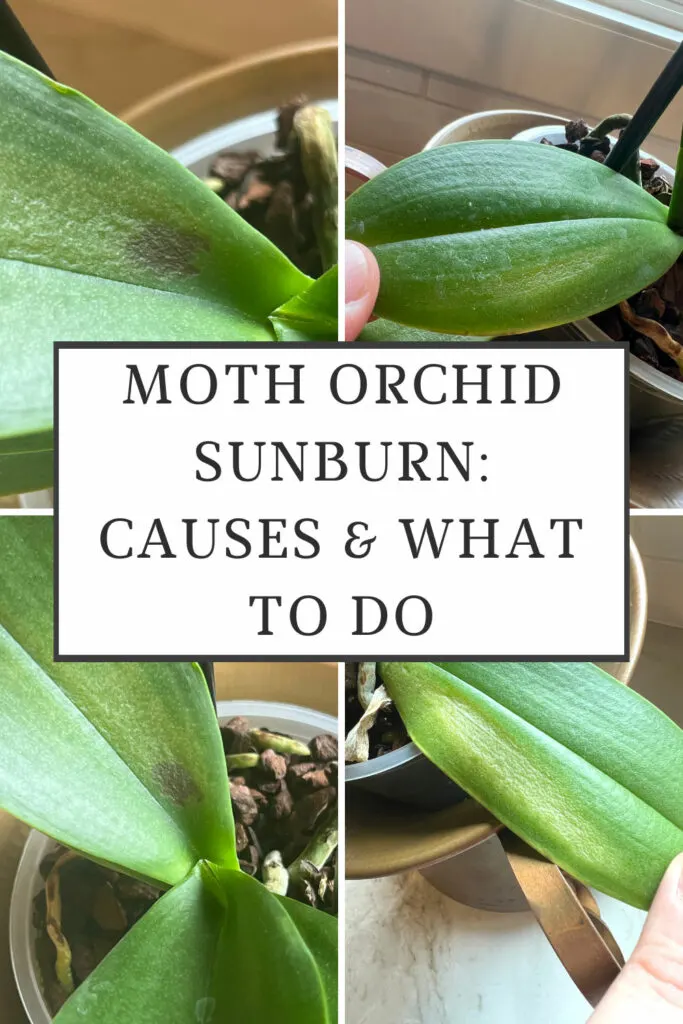
Once your orchid leaves experience sunburn, it is unfortunately not reversible. A sunburned leaf will not recover.
However, it doesn’t mean that the plant will necessarily die. You can still care for your plant, and if the sunburn is not too bad, your plant can come back over time if you nurture your plant.
With regular care, as long as you fixed the conditions that caused the sunburn in the first place, any new, future leaves will be healthy.
Table of Contents
MOTH ORCHID SUNBURN
Any type of orchid can get sunburn, but Phalaenopsis orchids (commonly known as moth orchids) can scorch quite easily compared to many other orchids.
I know this from experience, so I would like to share my experience with the issue in order to help you out.
WHAT BURNED ORCHID LEAVES LOOK LIKE
Here is what mild sunburn looks like in a moth orchid. Note the long, wrinkly, discolored area near the bottom of the leaf, as well as the yellowish edge at the bottom.
Wrinkled orchid leaves can also be a sign of dehydration, but the entire leaf would be wrinkly in that case, and I know this plant is not dehydrated.
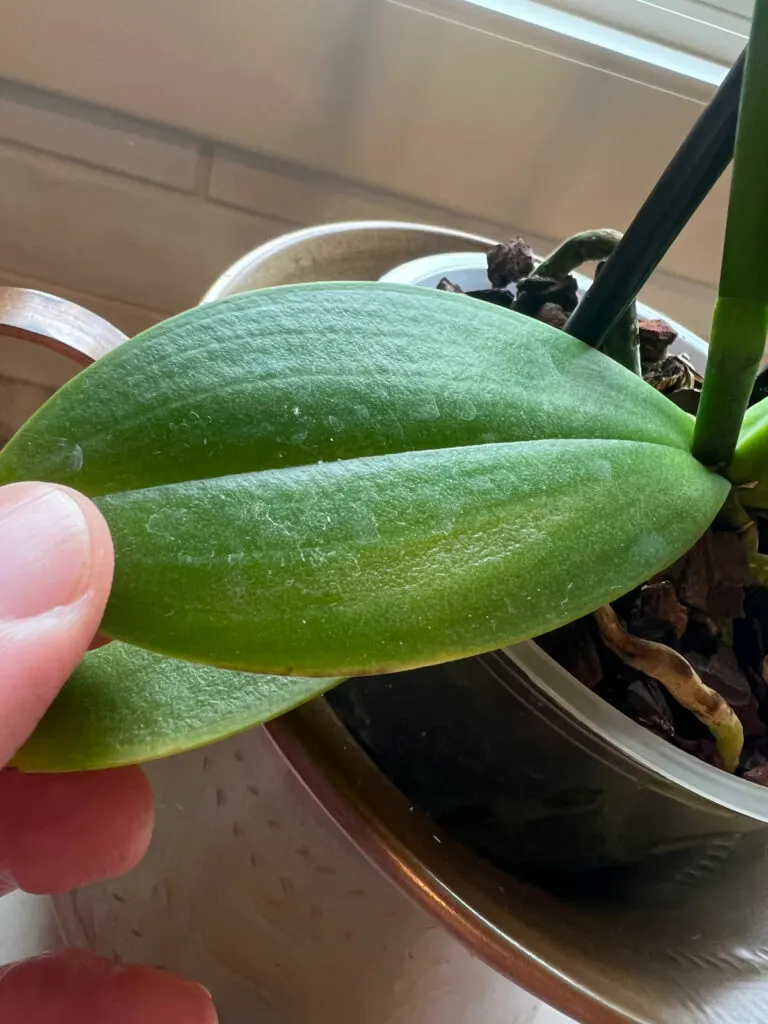
On the same plant, here is another leaf that has more severe sun burn. Notice the dark spot.
Sun burn will initially cause the leaf to look a little washed out, and then it will typically turn a light yellowish color, and then turn darker over time.
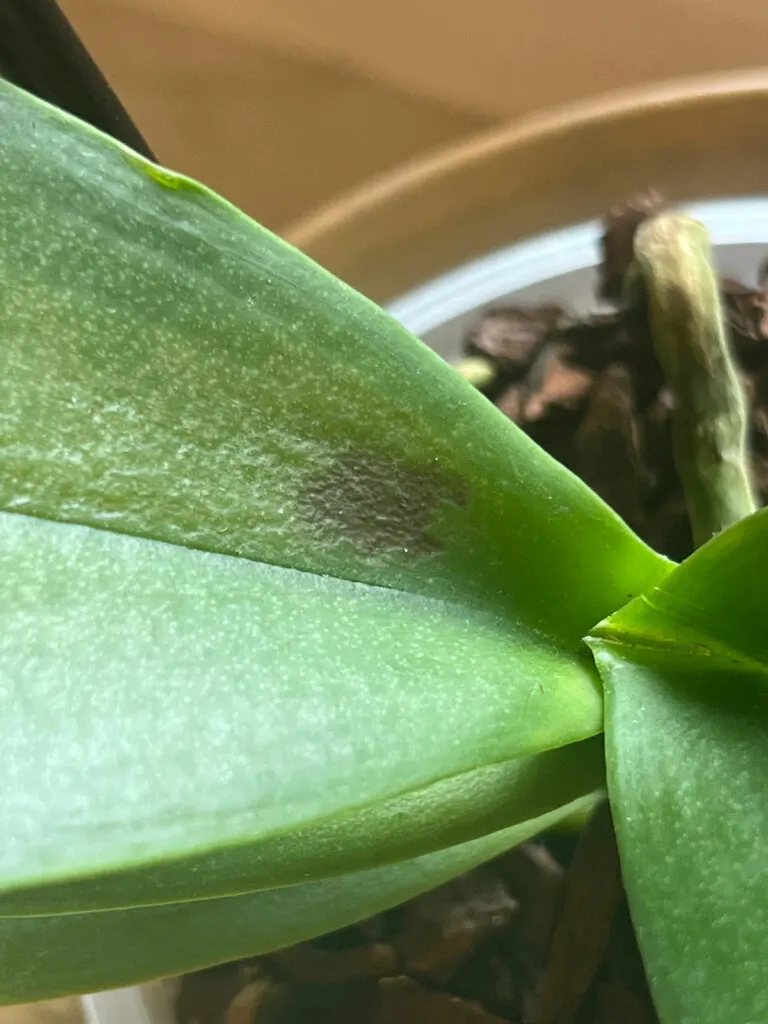
CAUSES
1. TOO MUCH DIRECT SUN
In my case, I had never had an opportunity to grow moth orchids in a southern-facing window at our home, until we redid our kitchen and I had a spot to place plants in that exposure.
The combination of too many hours of direct sun, combined with heat buildup from the southern exposure window, caused the leaves to burn.
This is not to say that moth orchids can’t grow in some direct sun indoors. I’ve grown orchids for years in front of Eastern facing windows, but this type of exposure receives gentler, less intense morning sun, and then receives no direct sun the rest of the day.
Moth orchids can also grow well in front of windows that don’t have any direct sun at all. It’s all about a balance however, because if your plant doesn’t get enough light, it won’t flower.
If you want to learn all about how to get your orchid to rebloom reliably and have healthy, thriving moth orchid plants, don’t miss my signature, online orchid care course, Become an Orchid Master. It also includes bonuses with support from me, personally, to guide you in your orchid journey!
If you have a window with no direct sun, keep your plant immediately in front of that window to ensure that it has enough light for it to grow well and to bloom in the future. Light intensity diminishes rapidly the further you move away from a window.
Another thing to consider is the change in seasons. Wintertime sun is less intense, and you may have had a perfectly happy orchid in the wintertime even with plenty of direct sun. But as the days get longer and the sun gets more intense in the Spring, it may sometimes be enough to cause sunburn.
If you are using grow lights, you can also scorch your orchid leaves as well. If your plant is placed too close to the grow light, it can potentially burn. If you’ve noticed this, you can remedy the situation by placing your plant further away from the grow light.
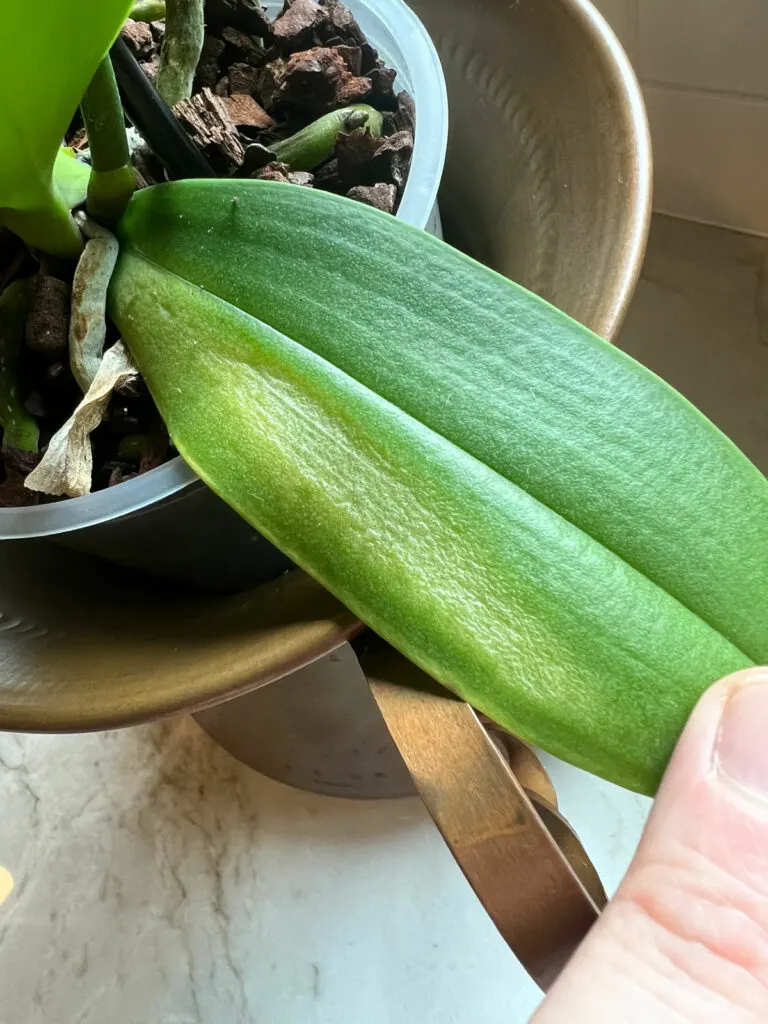
2. YOUR PLANT WASN’T ACCLIMATED PROPERLY
If you’ve purchased a moth orchid from a store and it has been in a dim location for a long time, if you don’t acclimate your plant to higher light slowly enough, it can burn.
If you are bringing a plant home from the store, place it in front of a window that has no direct sun first. After a few days, you can gradually increase any amount of sun exposure. If you want to keep your plant in a window with NO direct sun, that is fine too.
Like I mentioned earlier, morning sun from an Eastern facing window is great for these orchids, and gentle enough that they shouldn’t burn.
You can also get sunburn easily if you are growing your orchids indoors, and then move them outdoors without acclimating them slowly enough.
If you’re moving your orchids outdoors, place them in full shade for a period of several days FIRST. Light intensity outdoors is much higher than it is indoors. If you plan on keeping them permanently in full shade outside, your orchids will be perfectly happy there and you can keep them there.
But if you want to have your plants in any area that has some direct sun outdoors, make sure to introduce any direct sun slowly and increase any sun exposure little by little over a period of several more days.
Your plant will enjoy an area outside with filtered/dappled sun (such as under a tree), or in just early morning sun, or even very late afternoon sun. These plants do not like to be sitting in full sun all day, and you should especially avoid mid-day sun since it is very strong.
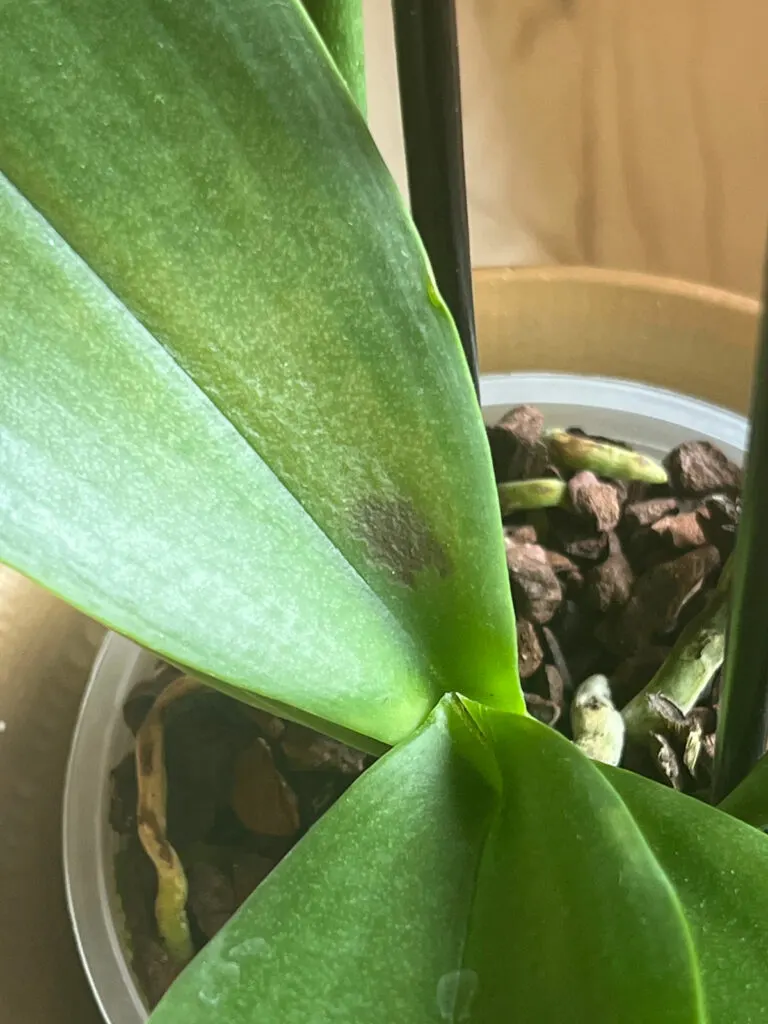
PREVENTION
Before I get into tips on what to do with your sunburned orchid, here are some tips that you can use to prevent any further sunburn for your orchids indoors.
One thing that you can do is simply move your plant a little bit off to the side or further back from the window where it burned (or further away from any growlights).
As an example, this is the location where my orchid burned by sitting in front of a southern facing window. The middle of the window where the plant is sitting receives the most direct sun.
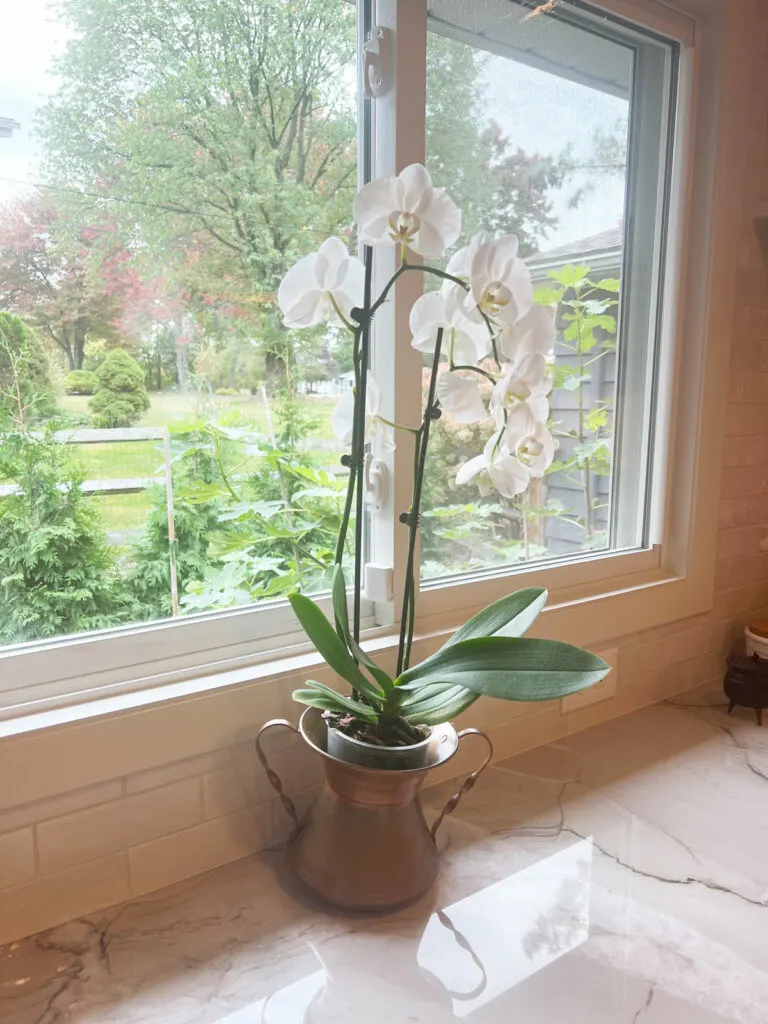
I liked having the plant in front of this window, so as soon as I noticed slight sun scorch on the leaves, I simply moved it off to the side.
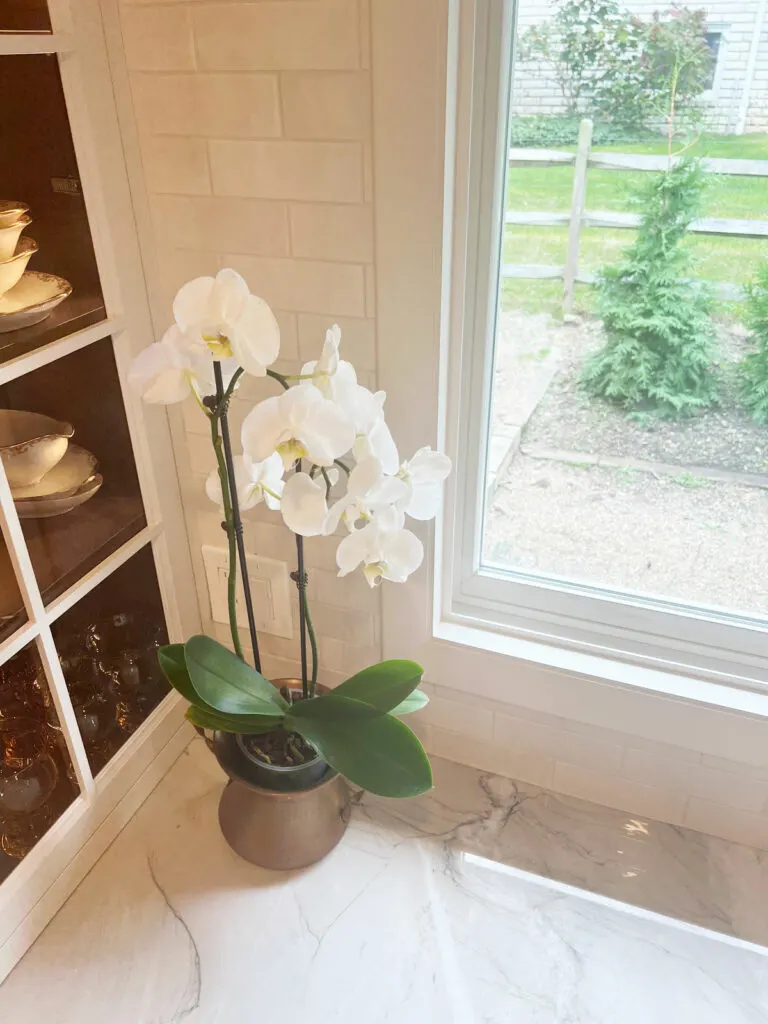
This side of the window still gets some direct sun, but substantially less than where the plant was placed previously.
You can also partially close blinds on your windows or reduce the light intensity, or even use sheer curtains to diffuse the sun.
Air circulation is also important for orchids, both to reduce any instances of fungal diseases, but also to cool the orchid down a bit and prevent intense heat build-up that can make sunburn worse.
Sun burn is more likely to occur with stagnant air that is not moving, because it will cause heat to build up. If you have a particularly sunny area indoors, it would be a good idea to gently circulate the air with a fan.
WHAT TO DO WITH YOUR BURNED ORCHID
Like I mentioned earlier, sun burned orchid leaves will not recover. But you can simply give your orchid basic care until it grows new leaves and recovers.
Your first inclination might be to cut the burned leaves off of your orchid. While you can do it, I encourage you to keep the sunburned leaves as long as you can if the leaves are mostly green.
Your plant will still photosynthesize, and with plants like moth orchids that grow so slowly, they will need all the help that they can get until they are able to grow new foliage. Most moth orchids will typically only grow 1-2 leaves per year.
Once your Phalaenopsis orchids have more foliage, if the sunburned leaves have become really unsightly (and aren’t green anymore) you can cut them off at that point.
I hope you’ve enjoyed this post on moth orchid sunburn. Have any of your orchids burned before? Comment below. I’d love to hear!

